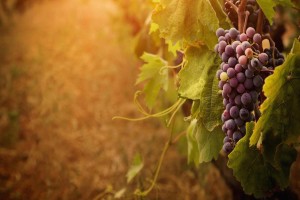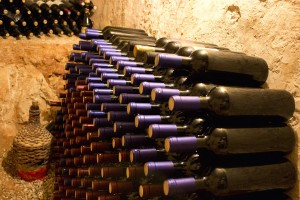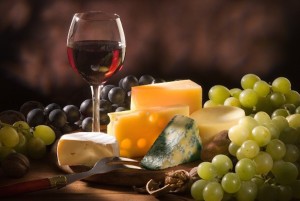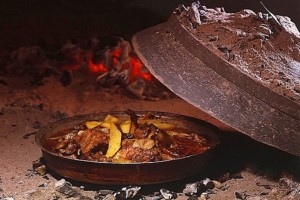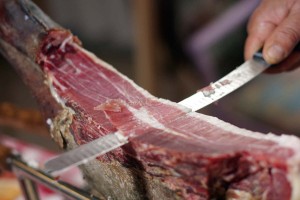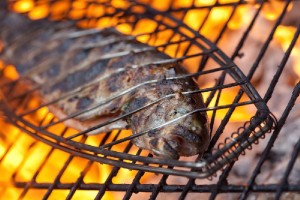Wines
When the words Dalmatia and wine appear in the same sentence, the first association is most often red wine. The next association is Plavac Mali – the leading variety of red wine in Dalmatia and Croatia. However, all the Dalmatian wines are magnificent.
Dalmatia is the only typical Mediterranean region in Croatia with high level of insolation. It has two faces. Coastal and islands, & 2. Hinterland.
In coastal area and islands, when talking about red varieties, the Plavac Mali rules, but there are other well-known varieties as Babić and Zinfandel (i.e. Crljenak or Pribidrag). There is even local saying which states: Praise every variety but grow Plavac Mali. Regarding white varieties, each island has different:
- on Korčula Pošip,
- on Hvar Bogdanuša,
- on Vis Vugava,
- in the area around Dubrovnik is Malvasia,
- on Pelješac is Rukatac.
There are another 20 or so varieties in this region but the common characteristics are that these wines are full-bodied, usually vibrantly acidic, mature and sometimes have an exotic fruitiness with herbal tones.
In Dalmatian Hinterland completely different varieties are dominant, such as, among the whites, Plavina, Babić and Lasina in terms of reds, and Kujundžuša, Maraština and Debit, and some international as Merlot, Syrah or Chardonnay. The wines coming from the Dalmatian hinterland are different from those from the coastal area mainly because of the freshness of taste and type of aromas. While the fruity tones in the Plavac varieties are mostly of dried plums and ripe cherries, the reds from the hinterland are dominated by black berries, amarena, and herbal tones such as tomato leaves. White wines are also slightly fresher and usually have a lower alcohol level.
Leading varieties and their characteristic
|
RED VARIETIES |
DESCRIPTION |
BEST PRODUCERS |
|
PLAVAC MALI |
Plavac Mali, a luxurious, mature and strong wine with aromas of dried plums and dried figs when coming from premium location. It has a more elegant and fresher fruit profile when coming from a location situated on the flatter parts of vineyards. |
Saint Hills, Bura, Tomić, Zlatan Otok, Plenković, Maditazza, Miličić, Stina, Grgić, Kota Katarina, PZ Postup, PZ Dingač, Miloš… |
|
BABIĆ |
Babić is equally as rich and full as Plavac, but with somewhat higher acidity, so its strength is always well covered by freshness, just like in the good Argentinean Malbec wines. |
Gracin. |
|
CRLJENAK / ZINFANDEL / PRIMITIVO / KRATOŠIJA |
Crljenak (Zinfandel, Primitivo, Pribidrag, Kratošija) is popular variety which always has an excellent proportion of pronounced acidity and quite a high alcohol level, which creates powerful and delicious wines with rather prominent fruitiness. |
Krolo, Zlatan Otok, Vuina… |
|
WHITE VARIETIES |
DESCRIPTION |
Best producers |
|
POŠIP |
Pošip is a variety which comes in two versions. The young version, one or two year old wine that has been in stainless steel barrels, has an exceptionally refreshing character and a very rich scent of fruity aromas that have been intertwined with the fresh aromas of grass. The other is aged wine which is put on the market two years after it is harvested and it reaches its ideal form in the third year; the aromas are more complex and the fruitiness goes hand in hand with the spicy aromas of oak. |
Krajančić, Korta Katarina, Grgić, Zlatan Otok, PZ Čara, Toreta, Grabovac, Madirazza, Stina… |
|
MARAŠTINA / RUKATAC |
Maraština (Rukatac) is currently the most widely used Dalmatian variety, which can be found both in Dalmatian hinterland and on the coast. It produces wines with a refreshing character, and sometimes, especially in Northern Dalmatia, it is used to give strength to full-bodied wines. |
Sladić Joso, Sladić Marinko, Duvančić… |
|
KUJUNĐUŠA |
Kujunđuša is a light and very drinkable wine with a refreshing character, goes ideally with fish carpaccio or hors-d’oeuvres, great during daytime in summer. |
Grabovac, Jerković… |
|
VUGAVA |
Vugava is a strong, full-bodied wine from the island of Vis. It should be consumed in moderation because of its high alcohol level. |
Stina, Lipanović… |
|
MALVASIJA & PROŠEK |
Malvasija Dubrovačka comes in two versions – either as sweet wine called PROŠEK or as a dry wine with a full body and pronounced minerality. |
Karaman, Crvik… |
|
DEBIT |
Debit is a light and mild wine with an almost neutral character and stable taste. It is excellent refreshment during the summer. |
Bibich |
The best locations are on the south slopes of the islands and peninsulas. Certain wines are also/or called by the location, if it is a good one. Therefore, most important locations for Plavac Mali are: Dingač, Ivan Dolac, Postup, Sveta Nedjelja, Murvica, Mili and Trstenik. The most important locations for Babić are: Primošten and Bucavac. The most important locations for Pošip are: Čara, Smokvica, Defora and Makarska.
The best example on Hvar is the family Plenković with their company Zlatan Otok, established in Sveta Nedjelja on the island of Hvar in 1986. The vineyards are located in the best position, wine-growing position, on the southern slopes of the island, where Plavac Mali is dominant. The company records successes at various domestic and international competitions and fairs. It was selected the Winemaker of the year in 2005 and in 2007, and ever since the winery has always ranked among the top three.
Gastronomy
We recommend the best, the most healthiest, the most traditional in Hvar
- Our restaurant Napoleon in Jelsa – Fusion of traditional and modern food
- Traditional restaurants, some operating without electricity
- Possibilities for local food catering / delivery
- About Dalmatian gastronomy in general
It is impossible to fully experience Dalmatia in all of its splendor without having a taste of it. Very special type of gastronomy is organically connected to the soil, the climate, the water and the painstaking labour that has always been part of the local tradition.
The Mediterranean diet is considered one of the healthiest, most imaginative and most refined in the world. Since the Adriatic Sea is the most beautiful bay in the Mediterranean basin, the gastronomy that has developed on its littoral is firmly marked by the superlative status of the land and occupies a high position on the global scale of gastronomic culture. Italian cuisine also Mediterranean and far better known than Croatian, but Croatia is a young country with newly discovered cuisine defined as one of the major gastronomic discoveries in nutritional and culinary trends.
The biggest selling points of the Dalmatian cuisine are fresh fish, crustaceans, shellfish and molluscs which are grilled, boiled, prepared as brodeto or cooked slowly under iron bell, or served raw. Very special is octopus under iron bell or as a salad dish.
Excellent olive oil whose global fame has been confirmed by being listing in the best international travel guides.
Simple vegetables grown in the unspoiled conditions in the fields of Hvar: Swiss chard, zucchini, green peas, asparagus, broad beans, fava beans, spinach, fennel, artichokes, cabbage or self-grown wild plants known as mišancija. The most popular salad vegetables are tasty tomatoes, especially in summer, arugula, fresh cabbage, cucumbers, lettuce and wild chicory.
As for local fish, sardines that have been the sustenance of Dalmatians for ages, to the white fish that dwells on the stony seabed such as sea bass, groper, John Dory, toot fish, gilt-poll or perhaps the blue finned delicacy tuna. The best known shellfish, Ostrea edulis, dwells in the Bay of Mali Ston near peninsula Pelješac.
Very famous regarding the meat is “Brač lamb” which is a famous gastronomic term of Dalmatia. Dalmatian Prosciutto is one of the best in the world, unfortunately not so many people makes it at home any more. The most popular first dish is sheep’s and goat’s cheeses served with prosciutto.
Best restaurants in Dalmatia could be found on Pakleni islands near town of Hvar, Nautika in Dubrovnik, Pojada in Vis, Noštromo in Split, Foša in Zadar, restaurants on Kornati archipelago, etc.
Dalmatian delicacies marry best with the top quality Dalmatian wines such as Tomić’s Plavac Mali, Plenković’s Zlatan Plavac, Kranjčić’s Pošip, Burin or Tolj’s Dingač, Miloš’s Stagnum, Vukas’ Plavac Mali, and many other. The best locations are southern side of the peninsulas and islands.
Dalmatia is definitely one of the most beautiful gastronomic oases in the world.

